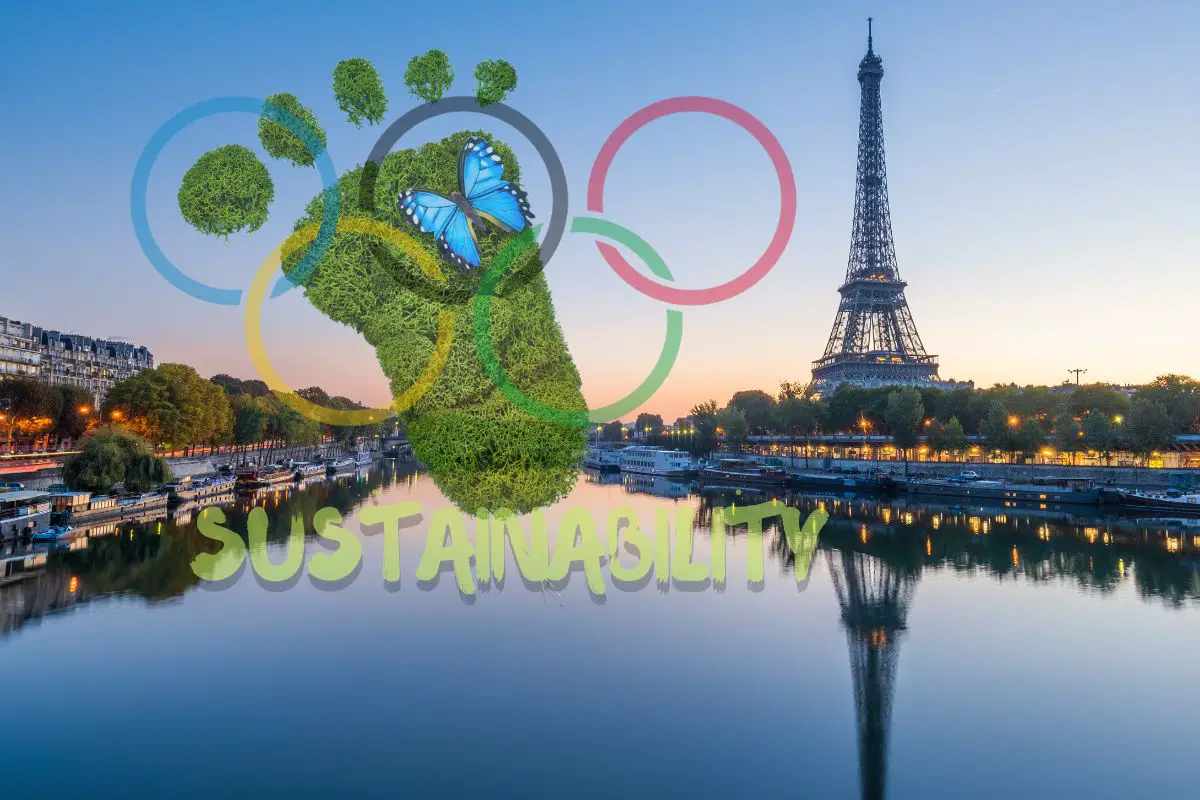Reduce, reuse, responsibility.
The Paris 2024 Olympics is nearly over, and aside from being a spectacular and exciting Summer Games so far, France’s capital has successfully hosted the most sustainable Olympics to date. It’s achieved this goal largely by reducing its carbon footprint, including lowering the use of resources, reusing existing infrastructure, and powering all venues with renewable energy.
Nearly all venues are existing or temporary.
To start, a huge contributor to making Paris 2024 the most sustainable Olympics, is the fact that 95{c431b1036349617aea55b35aa92592c3cb3fecc7f94273a754a3b674e9a603ce} of the venues being used for the event either previously existed or are temporary facilities. For instance, the main athletics stadium is the pre-existing Stade de France.
As for those facilities that had to be built, such as the Aquatics Center and the Olympic Village, they were developed using an environmental strategy that included low-carbon building materials. For instance, the Aquatics Centre is a wooden structure that features a massive solar array on its roof. What’s more, the near 11,000 seats that serve as the venue’s temporary stands have been made from recycled materials.
Georgina Grenon, #Paris2024 Director for Environmental Excellence speaks about how these Games are proving that it is possible to provide and showcase concrete solutions to secure climate ambitions. pic.twitter.com/EKs0YWihht
— IOC MEDIA (@iocmedia) August 6, 2024
Sustainable Olympics requires renewables.
In addition to reusing infrastructure and building eco-conscious facilities, using renewable energy to power all venues has helped Paris to achieve its impressively sustainable Olympics. Using both renewable power and retractable electrical terminals, it’s expected that when all is said and done, this clean energy approach will save about 13,000 tons of carbon emissions by simply reducing diesel generator use. Among the renewable energy sources used include on-site solar and geothermal generation.
Additionally, beyond extending its Métro, and adding more cycling lanes, 500 Toyota Mirai hydrogen fuel cell vehicles are being used to provide Olympic athletes (and soon Paralympic athletes) with zero-emission transportation.
A full lifecycle of resources.
 Another notable way that Paris 2024 has outshined previous Olympics in terms of its sustainability is its prioritization of renting and sharing over buying. Furthermore, focus has been placed on controlling the full lifecycle of resources, prior to, during, and after the Summer Games, with a second life for 90{c431b1036349617aea55b35aa92592c3cb3fecc7f94273a754a3b674e9a603ce} of equipment and goods secured.
Another notable way that Paris 2024 has outshined previous Olympics in terms of its sustainability is its prioritization of renting and sharing over buying. Furthermore, focus has been placed on controlling the full lifecycle of resources, prior to, during, and after the Summer Games, with a second life for 90{c431b1036349617aea55b35aa92592c3cb3fecc7f94273a754a3b674e9a603ce} of equipment and goods secured.
It will be interesting to see how the sustainable Olympics trend continues in the upcoming Games in Milan-Cortina d’Ampezzo, Italy (2026 Winter Games) and Los Angeles, United State (2028 Summer Games), and if they’ll be just as good or – hopefully – even better.

